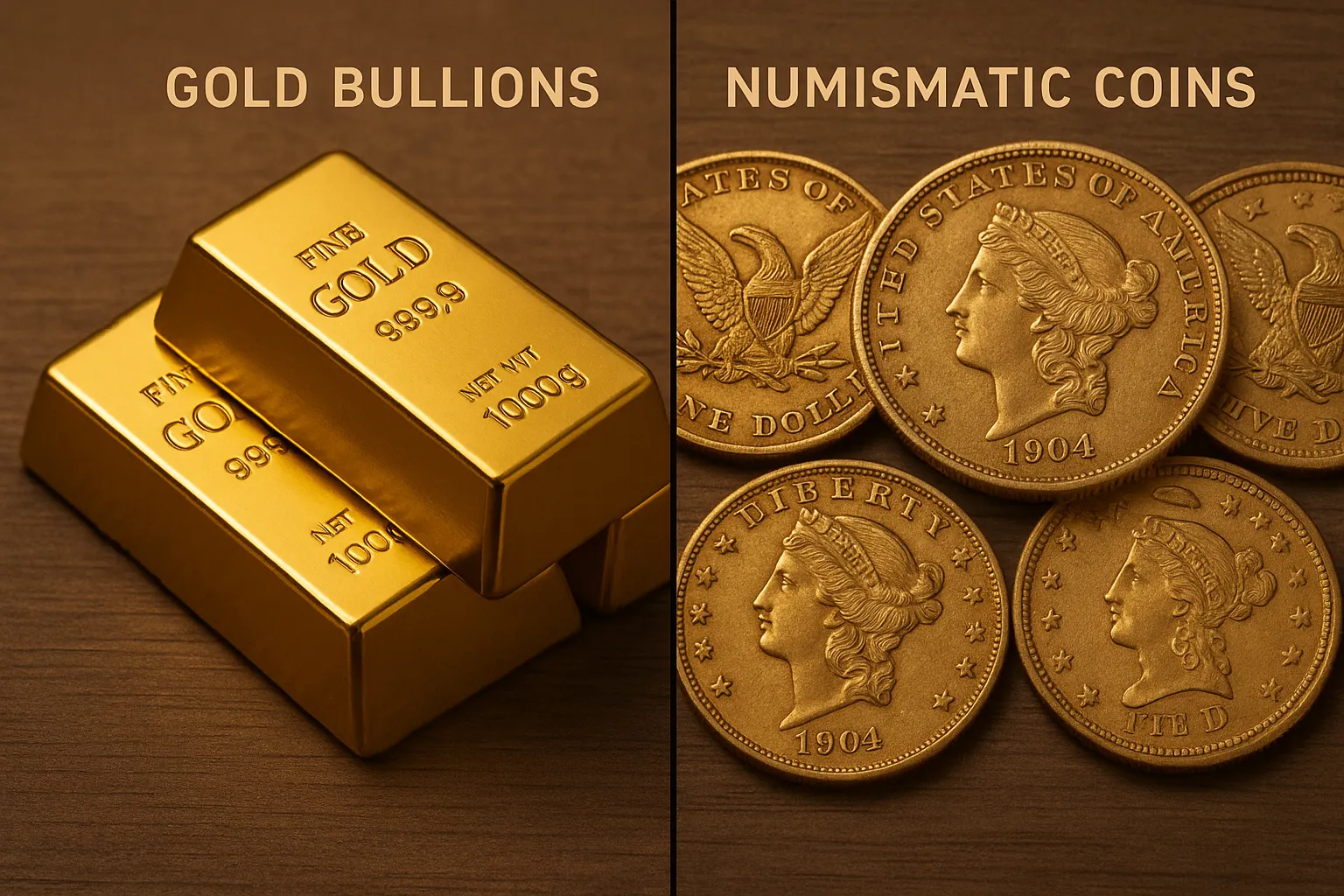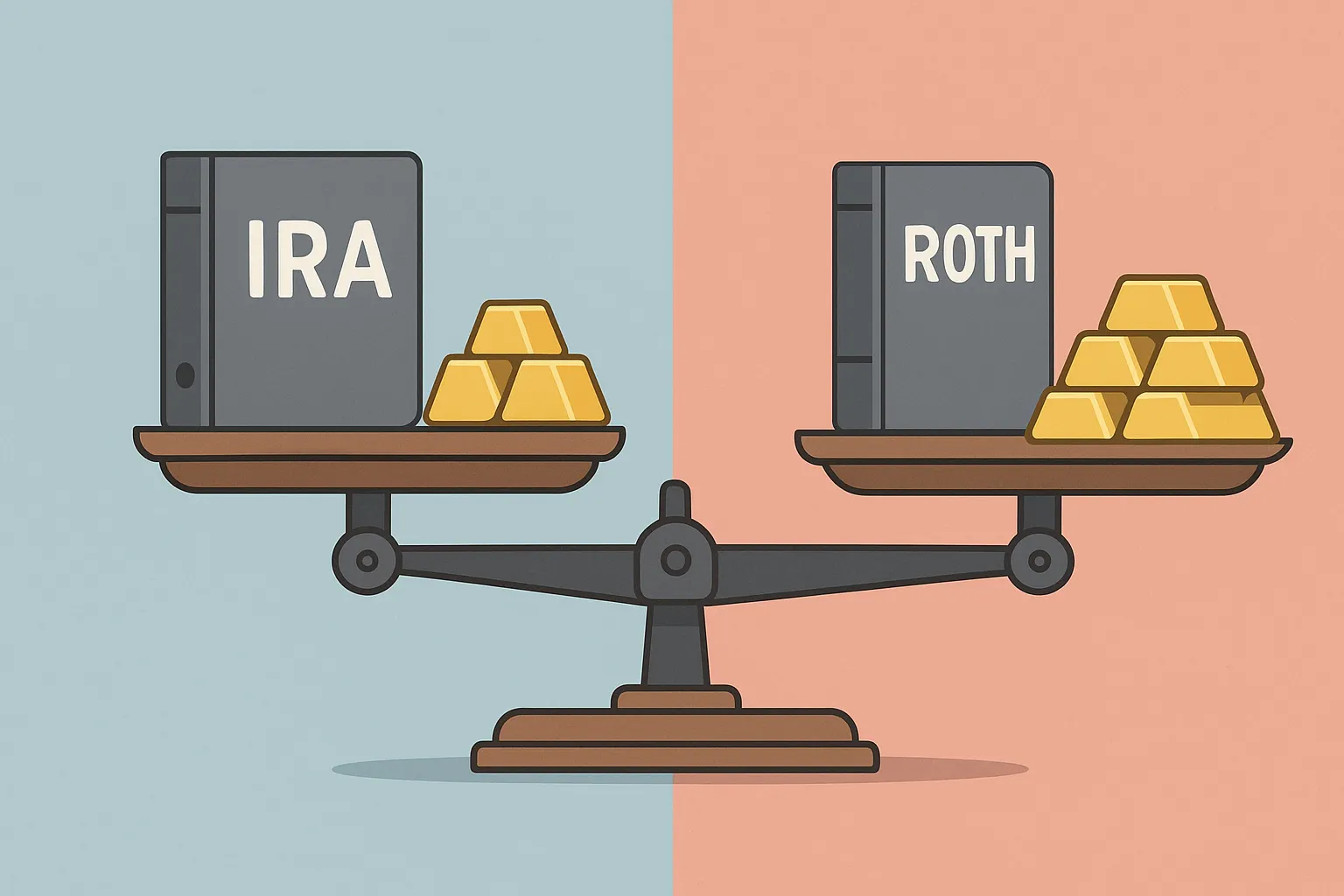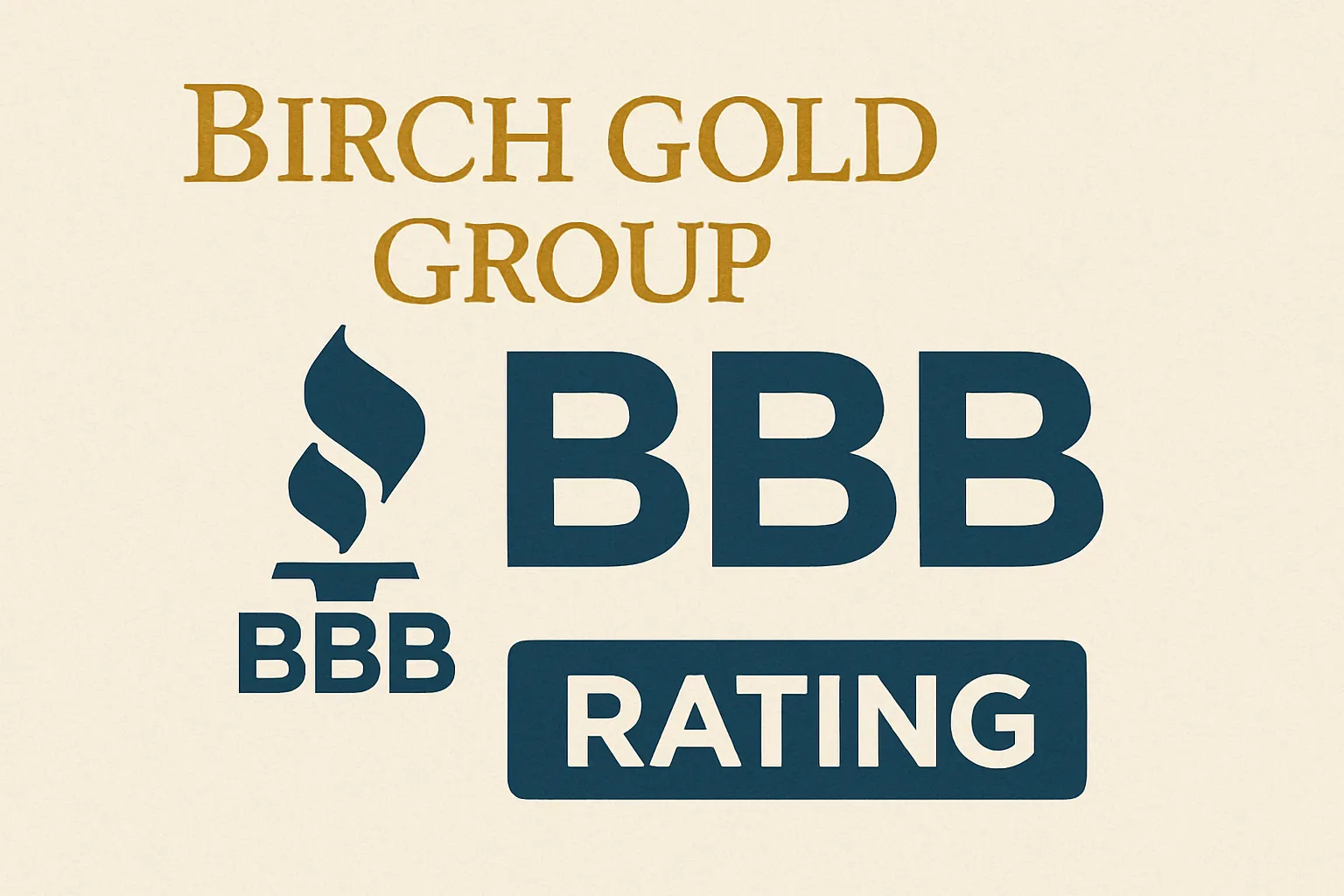Gold IRA Transfer to Beneficiaries
Complete guide
When a Gold IRA owner passes away, their precious metals retirement account doesn't simply disappear. Understanding how these specialized accounts transfer to beneficiaries is crucial for both current Gold IRA holders and their heirs. With new regulations taking effect in 2025 following the SECURE Act changes, the landscape for inherited retirement accounts has shifted dramatically.
Bottom Line: Gold IRA beneficiaries face the same distribution rules as traditional IRAs, but must navigate unique challenges involving physical precious metals storage, specialized custodians, and complex tax implications. Most non-spouse beneficiaries must now empty inherited Gold IRAs within 10 years.
Understanding Gold IRA Beneficiary Categories
The SECURE Act created a three-tier system that determines how quickly beneficiaries must withdraw inherited Gold IRA assets. Your relationship to the original account owner directly impacts your options.
Eligible Designated Beneficiaries (EDBs)
Eligible designated beneficiaries include surviving spouses, disabled or chronically ill individuals, individuals not more than 10 years younger than the IRA owner, or minor children of the IRA owner. These beneficiaries enjoy more flexible distribution options.
Spousal Beneficiaries have the most advantageous options:
- Treat the inherited Gold IRA as their own
- Take distributions based on life expectancy
- Choose the 10-year rule if more beneficial
Other EDBs can typically choose between:
- Life expectancy distributions
- The 10-year rule
Designated Beneficiaries (Non-EDB)
Most non-spouse beneficiaries who don't qualify as EDBs must use the 10-year rule, which requires depleting the inherited Gold IRA within 10 years of the original owner's death.
Non-Designated Beneficiaries
Entities like estates or charities typically face even stricter timelines, often requiring complete distribution within five years.
Critical 2025 Rule Changes
Beginning January 1, 2025, final IRS regulations require that beneficiaries subject to the 10-year rule must take annual required minimum distributions (RMDs) in years 1-9 if the original account owner had already begun taking RMDs.
This represents a significant change from previous interpretations where beneficiaries could wait until year 10 to take any distributions. Failure to take required RMDs results in a 25% penalty, reduced to 10% if corrected timely.
Transfer Options by Beneficiary Type
Spouse Beneficiary Options
Spousal beneficiaries have three primary choices:
1. Assume Ownership: Treat the Gold IRA as their own account
- Restart RMD calculations based on spouse's age
- Continue tax-deferred growth
- Name new beneficiaries
2. Remain as Beneficiary: Keep inherited status
- Begin RMDs by December 31 of the year after death or when the deceased would have reached RMD age, whichever is later
- Use single life expectancy calculations
3. Elect 10-Year Rule: Take advantage of flexibility if beneficial
Non-Spouse Beneficiary Requirements
For most non-spouse beneficiaries inheriting after 2019:
- Mandatory 10-year timeline for complete distribution
- Annual RMDs required if original owner had started RMDs
- No stretch provisions available (except for EDBs)
Unique Gold IRA Challenges
Physical Precious Metals Handling
Unlike traditional IRAs holding paper assets, Gold IRAs contain physical precious metals that require special handling during transfers.
Storage Requirements:
- Gold and other bullion must be held in the physical possession of a bank or IRS-approved nonbank trustee
- Beneficiaries cannot take physical possession without triggering distribution
- Storage fees continue during the transfer process
Insurance Considerations:
- Precious metals must remain fully insured during transfer
- Coverage gaps can create significant liability
- Documentation required for insurance continuity
Custodian Requirements
Gold IRAs require specialized custodians—typically banks or brokerage firms experienced in precious metals storage and reporting. This creates unique transfer challenges:
Custodian Compatibility:
- Not all IRA custodians handle precious metals
- Transfer timing depends on custodian coordination
- Documentation requirements more complex than traditional IRAs
Transfer Methods: Inherited IRA assets can only be moved through trustee-to-trustee transfers, never through rollovers. This protects the tax-advantaged status but requires careful coordination.
Read more about custodians HERE.
Tax Implications for Gold IRA Beneficiaries
Traditional vs. Roth Gold IRAs
Traditional Gold IRA Distributions:
- Taxed as ordinary income when withdrawn
- No step-up in basis for precious metals
- RMDs calculated on full account value
Roth Gold IRA Distributions:
- Tax-free if account held for 5+ years
- Generally subject to same RMD requirements as traditional inherited IRAs
- More favorable for beneficiaries
Distribution Timing Strategy
The compressed 10-year timeline creates tax planning challenges:
Years 1-9 Considerations:
- Balance RMD requirements with tax bracket management
- Consider voluntary distributions beyond RMDs
- Coordinate with other income sources
Year 10 Requirements:
- Complete distribution mandatory
- Potential for large taxable event
- Limited options for tax deferral
Step-by-Step Gold IRA Transfer Process
Immediate Steps (Within 9 Months)
1. Locate Important Documents
- Gold IRA account statements
- Beneficiary designation forms
- Death certificate copies
2. Contact Current Custodian
- Notify of account owner's death
- Request beneficiary distribution options
- Obtain required forms
3. Determine Distribution Strategy
- Assess your beneficiary category
- Calculate RMD requirements
- Plan tax implications
Setting Up Inherited Gold IRA
1. Choose New Custodian (if desired)
- Research precious metals specialists
- Compare fee structures
- Verify IRS approval status
2. Complete Transfer Documentation
- Inherited IRA must be titled in the deceased owner's name for the beneficiary's benefit
- Required identification documents
- Investment direction forms
3. Initiate Trustee-to-Trustee Transfer
- Coordinate between old and new custodians
- Ensure physical metals properly transferred
- Maintain insurance coverage
First Year Requirements
- Calculate and Take Required Distributions
- Determine if RMDs required in year 1
- Choose distribution method (cash or physical metals)
- File appropriate tax forms
Physical Metals vs. Cash Distributions
Beneficiaries face a unique choice unavailable with traditional IRAs: how to take distributions.
Cash Distribution Option
- Custodian sells precious metals at current market prices
- Beneficiary receives cash proceeds
- Simpler process but loses physical metal ownership
- Subject to buy/sell spreads and transaction costs
Physical Metals Distribution
- Beneficiary can receive actual gold, silver, platinum, or palladium
- More complex logistics and delivery arrangements
- Beneficiary responsible for storage and insurance post-distribution
- May have higher transaction costs
Common Mistakes to Avoid
Transfer Errors
Fatal Transfer Mistakes:
- Moving funds to non-IRA accounts permanently disqualifies tax advantages
- Attempting indirect rollovers instead of direct transfers
- Missing titling requirements for inherited accounts
RMD Compliance Failures
Costly Oversights:
- Failing to take required distributions in years 1-9
- Missing December 31 deadlines
- Miscalculating distribution amounts
Custodian Selection Problems
Expensive Missteps:
- Choosing custodians without precious metals expertise
- Overlooking high fees or poor storage arrangements
- Inadequate insurance coverage
Estate Planning Considerations
For Current Gold IRA Owners
Beneficiary Designation Review:
- Update forms after major life events
- Consider tax implications for beneficiaries
- Name contingent beneficiaries
Account Structure Optimization:
- Consider Roth conversions for tax-free inheritance
- Evaluate trust beneficiaries for asset protection
- Document investment preferences and rationale
For Beneficiaries
Immediate Planning Needs:
- Assess impact on current tax situation
- Coordinate with existing retirement planning
- Consider professional tax and legal counsel
Long-term Strategy:
- Plan for required distributions over 10-year period
- Evaluate precious metals as part of overall portfolio
- Consider reinvestment options for distributions
Professional Guidance Recommendations
Given the complexity of Gold IRA beneficiary rules, professional guidance is typically essential:
Tax Professional: Navigate RMD calculations and distribution timing
Estate Attorney: Address trust issues and complex family situations
Financial Advisor: Integrate inherited assets with overall financial plan
Precious Metals Specialist: Understand physical metals handling and storage
Key Takeaways and Action Steps
Gold IRA beneficiaries face unique challenges combining traditional IRA distribution rules with precious metals complexity. Beginning in 2025, most non-spouse beneficiaries must take annual distributions during the 10-year period, making immediate planning crucial.
Immediate Action Items:
- Determine your beneficiary category and applicable rules
- Contact the current custodian within 30 days of death
- Calculate first-year RMD requirements
- Evaluate current custodian vs. transfer options
- Develop 10-year distribution strategy
Long-term Considerations:
- Balance tax efficiency with investment goals
- Monitor precious metals market conditions
- Review and update your own estate planning
The intersection of precious metals investing and inherited IRA rules creates both opportunities and pitfalls. With proper planning and professional guidance, beneficiaries can successfully navigate these complex requirements while preserving the value of their inherited Gold IRA assets.
Remember: The 10-year distribution requirement represents a fundamental shift from previous "stretch IRA" strategies. Early planning and professional consultation can help minimize taxes and maximize the value of your inherited Gold IRA while ensuring full compliance with current regulations.

















